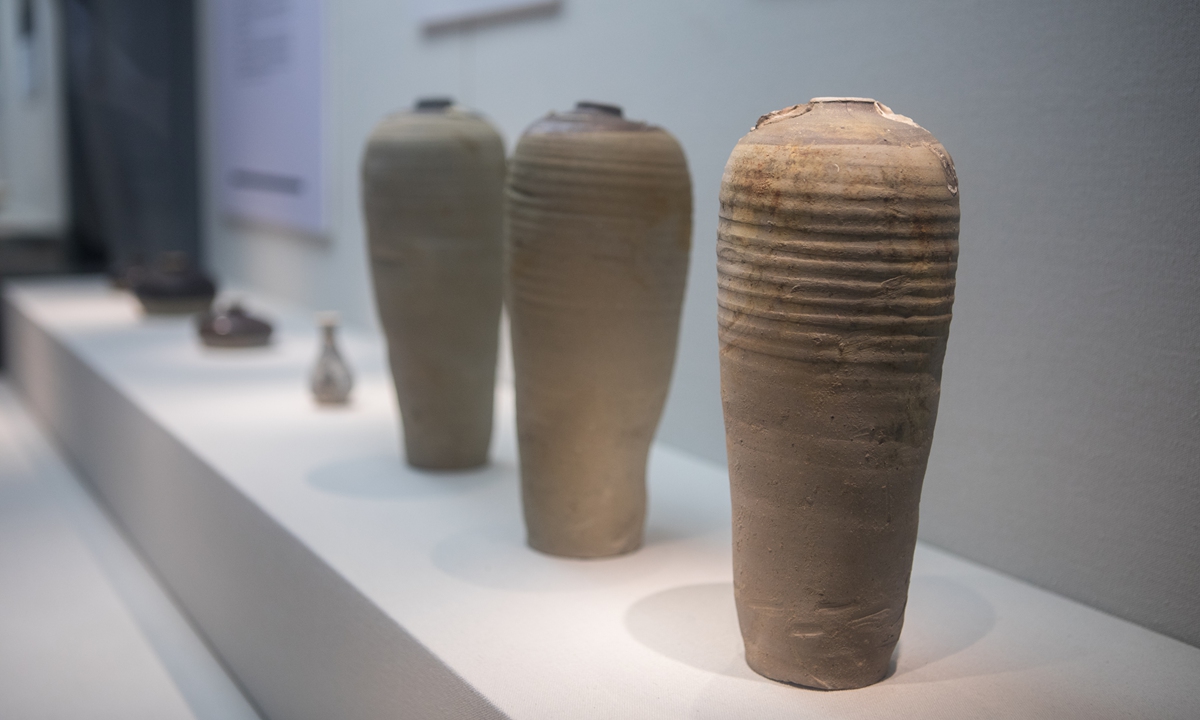Li Yuche
Through the continuous efforts of several generations of Chinese scholars, major research projects, such as the Project to Trace the Origins of Chinese Civilization, have shown that Chinese history includes 1 million years of human evolution, 10,000 years of culture and more than 5,000 years of civilization.
Thousands of museums across the country, with their rich collections and exhibits, are like stars lighting up the Milky Way that is China’s history.
In this series, the Global Times will introduce 10 museums from across the breadth and width of China, exploring their contributions to the country’s diverse, inclusive and continuous civilization.
This ninth installment of the series brings readers to the Maritime Silk Road Museum of Guangdong located in Yangjiang, South China’s Guangdong Province.
Despite being more than 17,500 square meters in size, the Maritime Silk Road Museum of Guangdong (MSRMG) in Yangjiang, South China’s Guangdong Province, is not famous for its grandeur, but its uniqueness, as it is China’s first museum focused on underwater archaeology.
While the first foundation stone for the MSRMG was laid in 2004, the venue only entered the limelight three years later due to a momentous event in China’s underwater archaeological history – the salvaging of a Song Dynasty (960-1279) shipwreck discovered off the coast of Yangjiang in 1987. The museum has become the home of the ancient ship, now known as the Nanhai No.1, and continues to tell the story of the Maritime Silk Road that began 800 years ago.
Unlike many other Chinese museums that feature a variety of relics, the MSRMG is dedicated to Nanhai No.1 culture, museum expert Li Yiyang told the Global Times.
A gold ware excavated from the Nanhai No.1 shipwreck Photo: VCG’Crystal palace’
Underwater archaeologist Wang Zhixin told the Global Times that salvaging the Nanhai No.1 marked several milestones for underwater archaeology. For instance, it is the world’s oldest, most-complete shipwreck of an ancient oceangoing trading vessel, as well as a perfect embodiment of China’s Maritime Silk Road history.
“The shipwreck was salvaged through an original approach too. A tailored metal caisson was built around it so it could be salvaged holistically along with the surrounding ocean bed. This approach used 16 years ago inspired future underwater projects at other places around the world,” Wang said.
The remains of the Nanhai No.1’s hull – ranging 21.9 meters in length – was directly transported to a bespoke “crystal palace” at the MSRMG, thus becoming the pearl of the museum’s collection.
The “crystal palace” is an exhibition hall with see-through windows that allows visitors to view the vessel up close and observe archaeologists as they continue to excavate the ship from the mud and sand that encloses parts of it.
Ye Daoyang, the deputy director of MSRMG’s Underwater Archaeology and Technology Department, told the Global Times that the Nanhai No.1 will “eventually become closer and closer to us.”
Ye said that during the excavation of the wreck over the past more than a decade, visitors have been able to witness the slow reveal of the ship, once revealing only 1 meter of hull, and the discovery of more than 20,000 relics.
“It is a dynamic site. The items on display frequently change as new relics are being discovered one by one. Most importantly, the museum is an archaeological site that keeps people close to first-hand discoveries,” Ye noted.
Aside from the wreck itself, the museum is home to numerous porcelain wares and a precious jade statue of Guanyin, known as the Goddess of Mercy. A wooden clawed shi ding is another item unique to the museum. A shi ding was a tool used during the Song and Yuan (1279-1368) dynasties to measure the balance of a ship.

Porcelain wares excavated from the Nanhai No.1 shipwreck Photo: VCG’Living proof’
The entire hull of the Nanhai No.1 is scheduled to be fully unveiled to visitors in July, Ye said. Such a milestone will define a new phase in the excavation to be more focused on the ship body’s investigation.
Among the relics that were once part of the ship’s cargo such as gold, silver and steel products, the porcelain wares are the most precious. Most of them were made at famous kilns in China such as the Jingdezhen and Longquan kilns respectively located in East China’s Jiangxi and Zhejiang provinces.
These porcelains were the major exports from China shipped along the ancient Maritime Silk Road. Wang said that they are “living proof” of China’s close cultural and trade exchanges during that time.
Originating during the Eastern Zhou Dynasty (770BC-256BC) and flourishing during the Tang Dynasty (618-907), the Maritime Silk Road is the oldest sea passage in the South China Sea, known in Chinese as Nanhai, which is also the origin of the wreck’s name.
Wang said the South China Sea is filled with abundant ancient shipwrecks and other relics worthy of archaeological study. Other famous wrecks include the Ming Dynasty (1368-1644) Nan’ao No.1 ancient ship, which was also discovered in Guangdong Province.
Such rich underwater resources have encouraged museums like the MSRMG to improve its facilities to protect these relics while finding creative means to introduce them to the public, Ye noted.
Partnering with China’s National Centre For Archaeology, the MSRMG has launched a research institution in Yangjiang that focuses on the creative utilization of discovered underwater sites.
“As we continue focusing on the archaeological study of the Nanhai No.1, we also have plans to launch creative cultural products related to it,” Ye said.
In February, China’s National Base for Underwater Archaeology (South China Sea) began operations aimed at developing the country’s underwater archaeology projects.
The new base is an “important project for protecting underwater relics in China” while “safeguarding national sovereignty, security and maritime rights,” said Li Qun, head of the National Cultural Heritage Administration.
Courtesy: globaltimes







